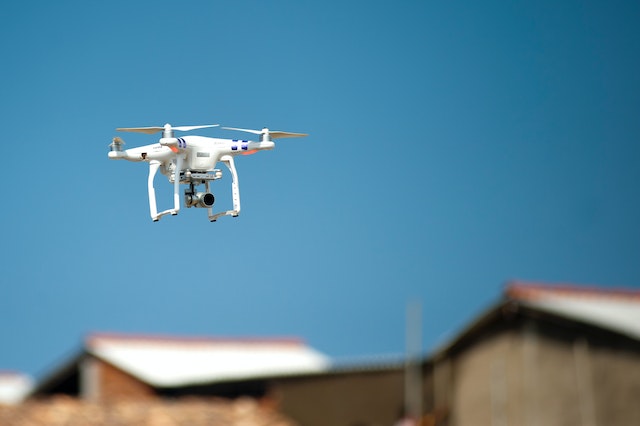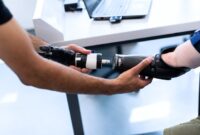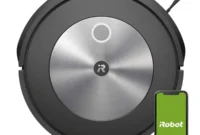Quadcopters, also known as drones, have rapidly gained popularity in recent years. These versatile flying devices have revolutionized industries such as aerial photography, videography, agriculture, and even package delivery. Whether you’re a hobbyist, a professional photographer, or someone curious about this exciting technology, this ultimate guide will provide you with everything you need to know about quadcopters.

I. Introduction
Quadcopters are unmanned aerial vehicles (UAVs) that rely on four rotors to achieve flight. They have become increasingly accessible and affordable, allowing individuals from various backgrounds to explore the skies. With advancements in technology, quadcopters have become more stable, capable, and feature-rich, making them suitable for a wide range of applications.
II. How Quadcopters Work
Quadcopters consist of several key components that work together to achieve flight. The frame provides the structure and houses all the necessary parts. The motors and propellers generate the necessary lift and control. The flight controller acts as the brain of the quadcopter, interpreting input from the pilot and adjusting the motor speeds accordingly. Additional sensors, such as accelerometers and gyroscopes, help maintain stability and control. Understanding these components is crucial for aspiring quadcopter pilots.
Quadcopters operate on the principle of aerodynamics and utilize a unique configuration of four rotors to achieve flight. Understanding the inner workings of a quadcopter is essential for becoming a proficient pilot. Let’s delve deeper into the components and mechanisms that make quadcopters fly.
1. Frame
The frame of a quadcopter serves as its structural backbone. It provides stability, houses all the components, and ensures durability during flights. Quadcopter frames are typically made of lightweight materials such as carbon fiber or plastic to maximize maneuverability and reduce overall weight.
2. Motors and Propellers
Quadcopters rely on four motors, one for each rotor, to generate lift and control. These motors are typically brushless electric motors that deliver high RPM (Rotations Per Minute) and provide the necessary power to propel the quadcopter into the air. Attached to each motor are propellers that create thrust by pushing air downwards. The speed and direction of each motor can be independently controlled to achieve stability and control during flight.
3. Flight Controller
The flight controller acts as the brain of the quadcopter. It receives inputs from the pilot through the remote controller and processes the information to adjust the motor speeds accordingly. The flight controller utilizes sensors such as accelerometers and gyroscopes to measure the quadcopter’s orientation, acceleration, and rotation. It constantly makes calculations and sends signals to the motors to maintain stability and control.
4. Electronic Speed Controllers (ESCs)
The electronic speed controllers are responsible for controlling the speed of each motor. They receive signals from the flight controller and adjust the power supplied to the motors accordingly. By varying the speed of each motor, the quadcopter can perform precise maneuvers and maintain its position in the air.
5. Battery
Quadcopters are powered by rechargeable batteries, usually lithium polymer (LiPo) batteries, which provide the necessary electrical energy to the motors and other components. The battery capacity determines the flight time, and it is essential to choose a battery with sufficient capacity for longer flights.
6. Sensors and Navigation Systems
Modern quadcopters are equipped with various sensors and navigation systems that enhance their flying capabilities. These include GPS (Global Positioning System) receivers that provide accurate positioning data, barometers that measure altitude, and magnetometers that determine orientation relative to the Earth’s magnetic field. These sensors enable advanced flight modes such as position hold, return-to-home, and waypoint navigation.
7. Remote Controller and Receiver
The remote controller is the interface between the pilot and the quadcopter. It allows the pilot to send commands to the quadcopter, such as throttle, pitch, roll, and yaw inputs. These commands are transmitted wirelessly to the quadcopter’s receiver, which relays the information to the flight controller for execution.
Understanding how these components work together enables pilots to control the quadcopter effectively. By adjusting the motor speeds and utilizing the flight controller’s capabilities, quadcopter pilots can perform various maneuvers, maintain stability, and explore the skies with confidence.
III. Choosing the Right Quadcopter
Selecting the right quadcopter depends on various factors, including your skill level, intended use, and budget. Racing quadcopters prioritize speed and agility, while photography-focused quadcopters offer high-quality cameras and stability for capturing stunning aerial shots. Recreational quadcopters strike a balance between performance and ease of use. Researching different brands and models will help you find the perfect quadcopter that meets your needs.
IV. Quadcopter Flying Basics
Before taking to the skies, it’s important to familiarize yourself with the basics of quadcopter flight. Pre-flight preparations, such as checking the battery, calibrating the compass, and ensuring a safe flying environment, are essential. Learning the controls and practicing basic maneuvers, such as hovering, ascending, descending, and turning, will build your confidence as a pilot. Understanding different flight modes and navigation features will enhance your overall flying experience.
V. Quadcopter Photography and Videography
One of the most exciting aspects of quadcopters is their ability to capture stunning aerial photographs and videos. With advancements in camera technology and stabilization systems, quadcopters have become valuable tools for photographers and videographers. This section will provide tips for capturing breathtaking aerial shots, choosing the right camera settings, and utilizing camera stabilization systems such as gimbals.
VI. Advanced Quadcopter Features and Accessories
Quadcopters offer a range of advanced features and accessories that can enhance your flying experience. Features like “follow me” mode, which allows the quadcopter to track a moving subject, and waypoints, where the quadcopter automatically navigates a pre-set route, add new dimensions to your flights. Additionally, FPV (First Person View) systems provide an immersive flying experience. Accessories like spare batteries, propellers, and carrying cases are essential for convenience and safety.
VII. Quadcopter Maintenance and Troubleshooting
To keep your quadcopter in optimal condition, regular maintenance is crucial. This section will provide a comprehensive guide to routine maintenance practices, such as cleaning, motor inspection, and firmware updates. Additionally, troubleshooting common issues, such as GPS signal loss, motor vibrations, and connectivity problems, will help you resolve problems and ensure a smooth flying experience.
To ensure your quadcopter performs optimally and remains safe to fly, regular maintenance and troubleshooting are essential. This section will guide you through routine maintenance practices and provide solutions to common issues that may arise during quadcopter operation.
1. Routine Maintenance Practices
a. Cleaning
Regularly clean your quadcopter to remove dust, dirt, and debris that can accumulate on the frame, motors, and propellers. Use a soft brush or compressed air to gently clean these areas. Be cautious not to damage any delicate components.
b. Motor Inspection
Inspect the motors for any signs of damage or wear. Check for loose or damaged wires, and ensure that the motors spin freely without any unusual resistance. If you notice any issues, consider replacing the motor or seeking professional assistance.
c. Firmware Updates
Keep the firmware of your quadcopter and the flight controller up to date. Manufacturers often release firmware updates to enhance performance, add new features, and address any existing issues. Follow the instructions provided by the manufacturer to update the firmware correctly.
d. Battery Care
Take proper care of the quadcopter’s battery to maintain its performance and prolong its lifespan. Follow the manufacturer’s guidelines for charging and discharging the battery. Avoid overcharging or completely draining the battery, as this can damage its cells. Store the battery in a cool, dry place away from direct sunlight.
2. Troubleshooting Common Issues
a. GPS Signal Loss
If you experience GPS signal loss during flight, ensure that you are in an open area away from any obstructions that may interfere with satellite reception. Check if the GPS antenna is securely attached and positioned correctly on the quadcopter. If the issue persists, recalibrate the compass and GPS settings according to the manufacturer’s instructions.
b. Motor Vibrations
Excessive vibrations from the motors can negatively affect flight stability and overall performance. Inspect the propellers for any damage or imbalances. Replace any damaged propellers and ensure that they are correctly attached. Balancing the propellers using a propeller balancer can also help minimize vibrations.
c. Connectivity Problems
If you experience connectivity issues between the remote controller and the quadcopter, ensure that both devices are properly paired and within the recommended range. Check for any potential interference from nearby electronic devices or sources, such as Wi-Fi routers or power lines. If the problem persists, try recalibrating the remote controller and the quadcopter.
d. Abnormal Battery Performance
If you notice a significant decrease in flight time or the battery discharges rapidly, it may indicate a battery issue. Check the battery for any physical damage or swelling. Ensure that the battery contacts are clean and securely connected. If the problem persists, consider replacing the battery with a new one.
Regular maintenance and timely troubleshooting can help you address potential issues before they escalate. If you encounter more complex problems or are unsure how to resolve an issue, consult the manufacturer’s documentation or seek assistance from a professional. Remember, prioritizing safety and maintaining the quadcopter’s components will ensure a smooth and enjoyable flying experience.
VIII. Legal and Safety Considerations
Flying quadcopters comes with legal and safety responsibilities. Understanding local drone regulations and restrictions is essential to avoid legal consequences. Safety guidelines, such as flying in designated areas, respecting privacy, and maintaining visual line of sight, protect both you and others. This section will provide an overview of common legal and safety considerations when operating quadcopters.
IX. Future Trends in Quadcopters
The quadcopter industry continues to evolve, with new technologies and innovations constantly emerging. This section will explore exciting trends and developments in the quadcopter industry, including advancements in battery technology, artificial intelligence, obstacle avoidance systems, and autonomous flight. We’ll also discuss potential future applications of quadcopters, such as aerial transportation and disaster response.
X. Conclusion
Quadcopters have transformed the way we view and interact with the world around us. From capturing stunning aerial photographs to inspecting hard-to-reach areas, these versatile flying machines offer endless possibilities. By understanding the fundamentals of quadcopters, choosing the right model, mastering flight controls, and adhering to legal and safety considerations, you can embark on an exciting journey in the world of quadcopters.
FAQs
1. Are quadcopters difficult to fly?
- Flying a quadcopter requires practice and understanding, but with patience and dedication, anyone can learn to fly one.
2. Can I fly a quadcopter indoors?
- While it’s possible to fly a quadcopter indoors, it’s generally recommended to fly in open, outdoor areas for safety reasons.
3. How long can a quadcopter fly on a single battery charge?
- Flight time depends on various factors, such as quadcopter model, battery capacity, and flying conditions. On average, quadcopters can fly for around 15-30 minutes on a single charge.
4. Do I need a license to fly a quadcopter?
- The need for a license depends on the country and the weight of the quadcopter. It’s essential to familiarize yourself with local regulations to ensure compliance.
5. Can I attach my own camera to a quadcopter?
- Some quadcopter models allow for the attachment of external cameras, but it’s important to check the specifications and compatibility of the quadcopter before doing so.


